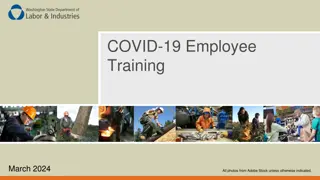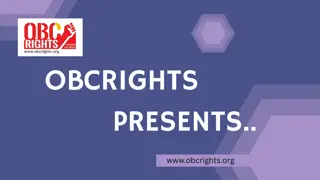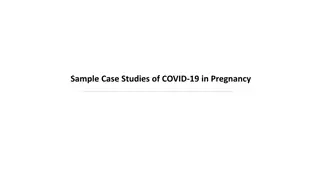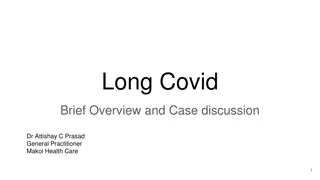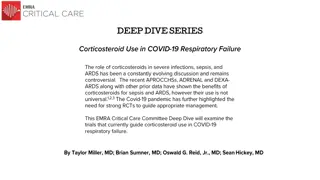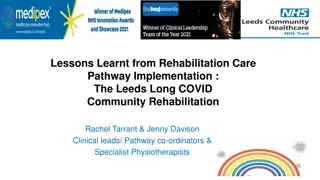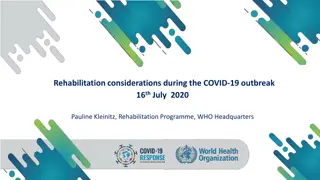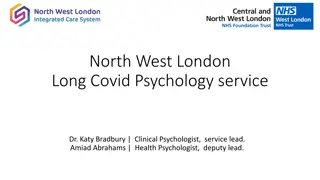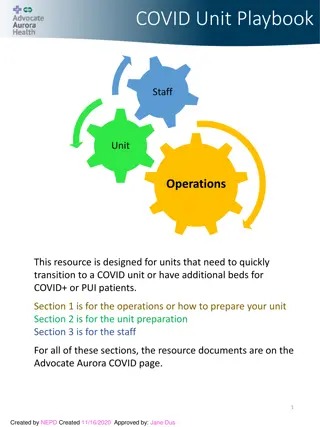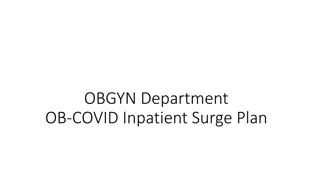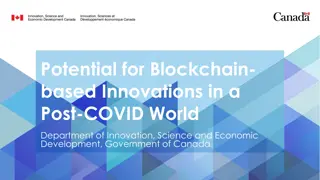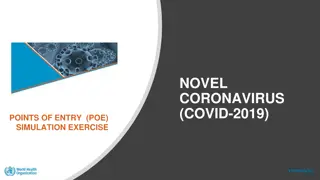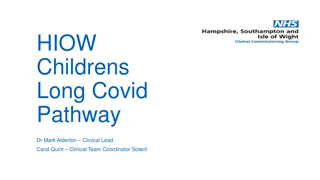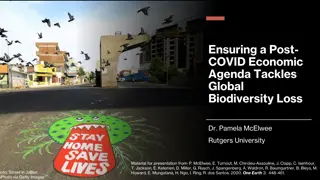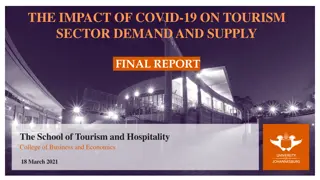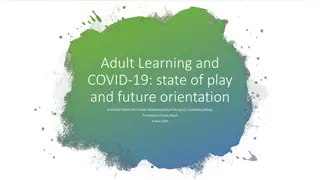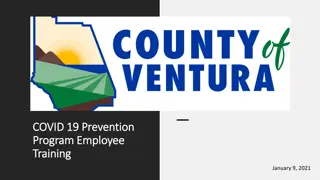
Post-COVID-19 Behavioral Health Preparedness Overview
Explore models addressing post-pandemic behavioral health issues, symptoms, and societal impacts, including stigma and reduced medical care access. Learn from past events like SARS and economic recessions.
Download Presentation

Please find below an Image/Link to download the presentation.
The content on the website is provided AS IS for your information and personal use only. It may not be sold, licensed, or shared on other websites without obtaining consent from the author. If you encounter any issues during the download, it is possible that the publisher has removed the file from their server.
You are allowed to download the files provided on this website for personal or commercial use, subject to the condition that they are used lawfully. All files are the property of their respective owners.
The content on the website is provided AS IS for your information and personal use only. It may not be sold, licensed, or shared on other websites without obtaining consent from the author.
E N D
Presentation Transcript
Post COVID-19 Planning Prepared for North Sound BH-ASO Dr. Glenn Lippman Dr. Glenn Lippman May 2020 May 2020
Purpose Look at current models regarding Post-Pandemic Behavioral Health (BH) issues and needs Information from other resources Person specific concepts
Reactions & Behavioral Health Symptoms in Disasters: SAMHSA
Forecasted Behavioral Health symptoms from COVID-19 Over Time
Other Influences Stress levels of SARS survivors remained persistently elevated and higher than those of community control subjects 1 year after the SARS outbreak. (multiple SARS studies) Although many individuals experiencing psychological distress or psychiatric disorder they may not seek formal help for their symptoms. BJP (2018) Large scale disasters are almost always accompanied by increases in depression, posttraumatic stress disorder (PTSD), substance use disorder, a broad range of other mental and behavioral disorders, domestic violence, and child abuse. JAMA Internal (2020) Preliminary prevalence and mortality estimates in multiple geographic areas, show a consistent pattern of racial/ethnic differences. JAMA Internal (May 2020)
Other Influences (Continued) Issues with STIGMA - Participants in several studies reported that others were treating them differently: avoiding them, withdrawing social invitations, treating them with fear and suspicion, and making critical comments. Lancet (2020) Routine medical care is deferred: There has been on average a 60% decrease from pre-pandemic levels in eight hospitals in the three regions that were assessed. Urgent cancer referrals have dropped by an average of 76% compared to pre-pandemic levels in the three regions. MMR down 40% and DipT down 22% from Feb to April. Routine Cancer screenings are down over 50%
Impact of Behavioral Health from the Economic Changes Conclusions based on certain study populations and events (SARS, Katrina, 9/11) might not be generalizable to the wider public or present time. However, there are similarities to the impact from the 2007-2009 economic recession that provide additional clues . From the Meadows Mental Health Policy Institute in Texas which is nationally known for being a leader in policy toward improving the care of people with mental illness
. About just under 1000 people being lost for every 1% increase in unemployment; 780 is the number that was projected. Medscape, Stephen M. Strakowski, MD; Nassir Ghaemi, MD, MPH; Andy Keller, PhD May 08, 2020
Projecting about 100,000 additional cases of substance use disorders related to the recession, and the data shows the projected deaths due to drug overdoses- approximately 400 lost per 1% Medscape, Stephen M. Strakowski, MD; Nassir Ghaemi, MD, MPH; Andy Keller, PhD May 08, 2020
Considerations Those individuals we know Those individuals we don t know yet Specific groups Health Care Workers (HCW) and First Responders Elderly Medically compromised Post COVID-19 Neuropsychiatric sequelae
Those we Know Yet Those we Don t Know People with pre-pandemic Mental Health Issues People with pre and/or post Mental Health Issues Unemployed Under-employed Family violence victims New onset BH issues SUD Mental Health Depression, anxiety, and PTSD related issues Grief and Loss issues Missed or delayed medical care Development of distress reactions with associated exhibit health-risk behaviors, such as substance use, family conflict and insomnia. Possible missed appointments, scripts, doses Higher risks of Anxiety and PTSD like symptoms Higher risks of SUD issues Greater levels of isolation Issues around lost supports Children with parents returning to work while no school or aftercare, continued disruption in schedules and routine, fear, and erosion of prior gains in treatment or school settings.
Opportunities to Consider Increase accessibility to follow up appointments Increased roles for pharmacists, nurses, groups, peer supports Proactive outreach (telephonic, text) Continued expansion of tele-med and continued flexibility of its use Increased availability of family, youth services along with family education around how children manifest reactions to such situations. Implementation of Stepped care or for others an EAP model of services that are problem focused, time limited and based on measured outcomes Collaboration with FQHC s and PCP s Standardized screenings Use of MH appointments to assess for missed medical care 2-1-1 service information to BH Crisis system Collaboration with community safety net systems (Salvation Army, Boys/Girls Clubs, Red Cross, Food Banks, Financial Systems) Extending outreach for additional delivery of Psychological First Aid or outreach* Culturally adapted mental health services that address the inequitable distribution of services Family education around Maximize awareness of existing telephone supports and life lifelines (such as national Disaster Distress Helpline). Cohen GH, Tamrakar S, Lowe S, et al, Comparison of simulated treatment and cost-effectiveness of a stepped care case-finding intervention vs usual care for posttraumatic stress disorder after a natural disaster. JAMA Psychiatry. 2017;74(12):1251-1258. doi:10.1001/jamapsychiatry. 2017.3037 *doi:10.1001/jamainternmed.2020.1562
Specific Sectors Healthcare workers/First Responders Address PTSD related issues (ongoing), stigma, anger and family issues. Surveillance Elderly Proactive Outreach. Gatekeeper model (Care Manag J. 2013;14(1):11-20) COVID recovering persons Monitoring for long term neuro-psychiatric sequelae of COVID
What We Dont Know Recurrences of COVID-19 Impact of vaccines hopes and disappointments Long term impact due to Social/healthcare inequities Worsening impact of limited Economic recovery or slow down Lack of Housing stability Long terms impact on healthcare delivery system (especially in rural settings) Long term impact of misinformation And . How accurate are any projections?
Final thoughts We do have, I think, some time to ramp up and be ready. I would recommend, too, that we really look at primary care strategies, because if we don't expand detection and treatment more to primary care with partnerships with psychiatry using things like collaborative care we're just not going to have the bandwidth to be available . Andrew Keller, PhD We need to think about how we can grow and be stronger from this event. We need to be thinking about post-traumatic growth.

